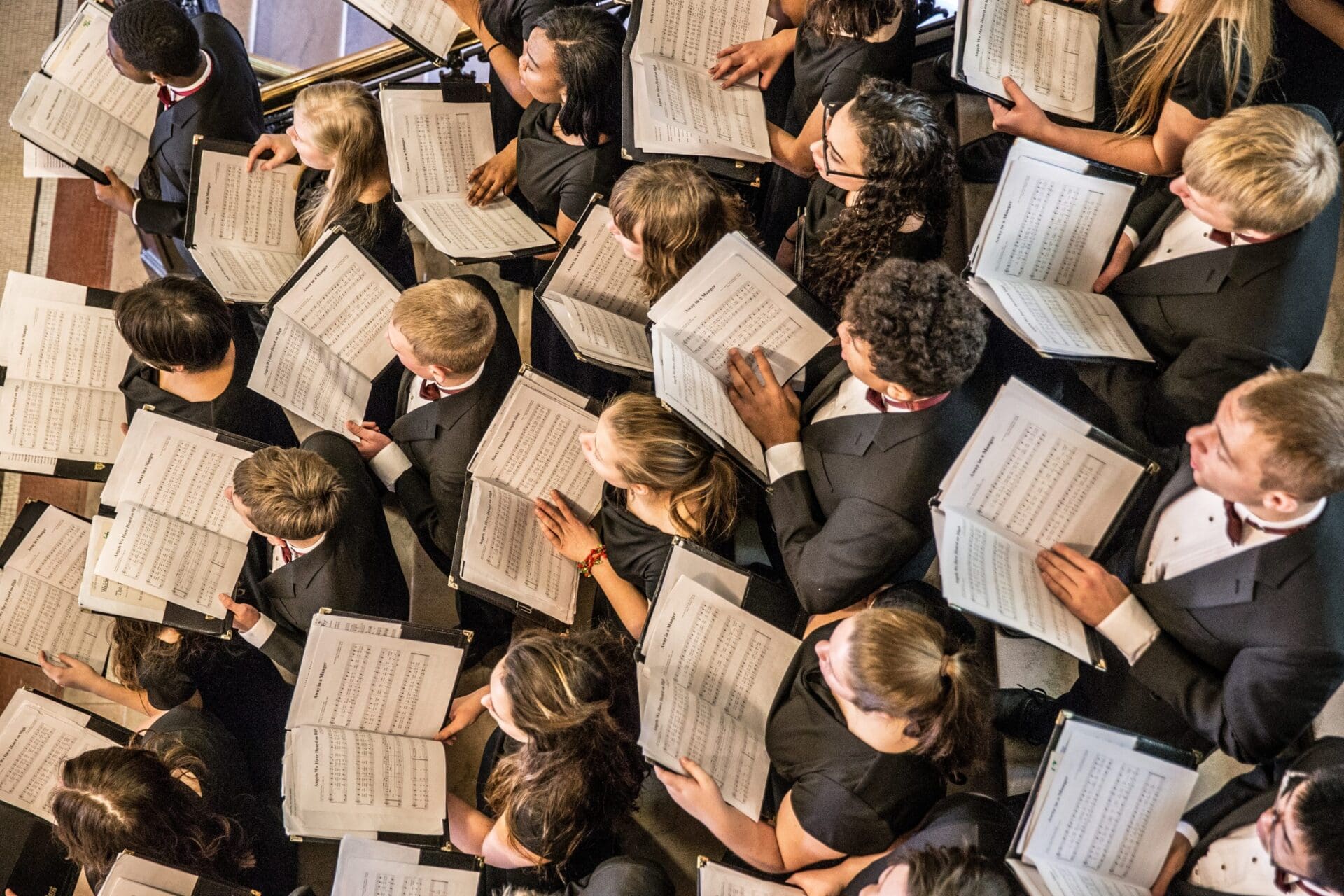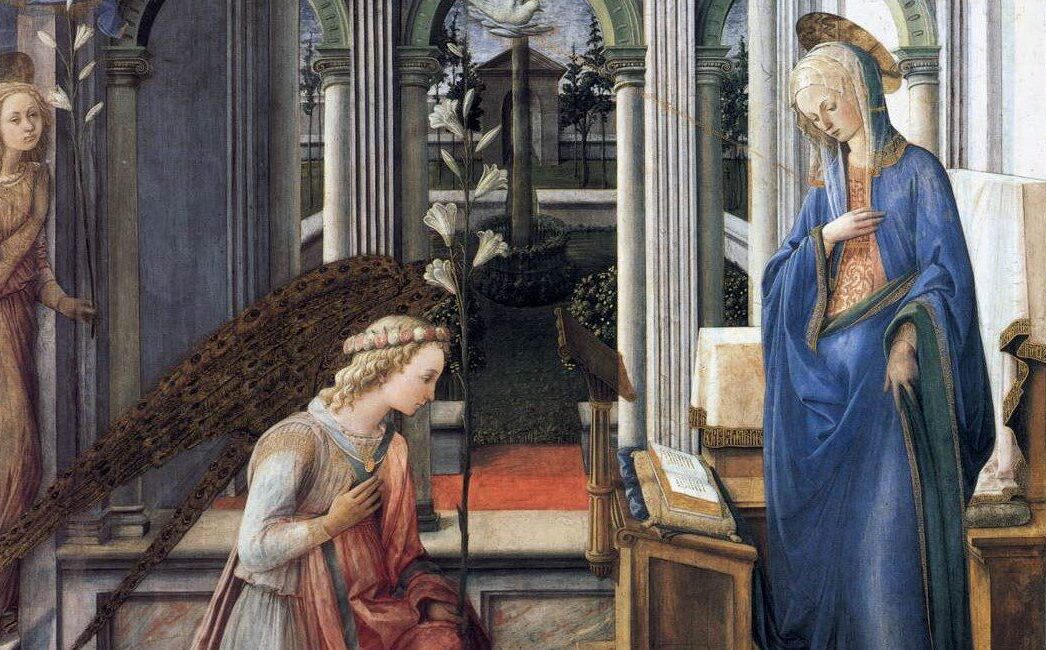Source & Summit is a new Catholic software company that also publishes missals, hymnals, and other musical and liturgical resources to help parishes everywhere elevate the liturgy by placing the Mass and authentic liturgical prayer upon what its founders call “the mountaintop of Catholic life.” On August 2, the company announced its official launch.
Through software and online tools, liturgy and music resources, and training programs, Source & Summit, says its founder and CEO, Adam Bartlett, seeks to equip parishes for success as part of the New Evangelization called for by Pope John Paul II, by offering customers both its Missal and a digital platform, both offering the typical components of an annual Catholic missal. In addition, the publication also provides a generous selection of sacred music for parishes to incorporate into their weekly liturgy.
The Source & Summit missal is currently in stock and available to order. For more information about Source & Summit and its resources, visit its website: www.sourceandsummit.com, or call 888-462-7780.
Adoremus spoke with Bartlett about his new venture, how it will help parishes as they return from the COVID lockdown, and what Source & Summit means for the future of liturgical renewal in the Church.
What is the purpose and scope of Source & Summit?
Source & Summit exists to help every parish elevate the liturgy. Put differently, we exist to help parishes everywhere undertake an effort of authentic liturgical renewal that places the liturgy in its rightful place upon the mountain summit of the Church’s life so that it also can serve effectively as the life-giving font of the whole of the Church’s life and mission. As a Catholic liturgy and music resource provider, we offer practical tools, musical and liturgical resources, and reliable, accessible training to parishes in order to assist them in the work of liturgical renewal.
How does Source & Summit help parishes in their transition from previous missal programs or parishes who are starting from scratch?
Most parishes that are undertaking an effort of liturgical renewal need inspiration and guidance, accessible resources, and easy-to-use practical tools that help make the task as seamless and simple as possible. We offer these aids to parishes primarily through the Source & Summit Missal and Digital Platform, and also through our ever-growing Academy which is now underway and officially launching in 2022. The Source & Summit Missal seeks to make the transition from a conventional missal or hymnal a mostly seamless process for parishes while opening them up to many musical riches of the liturgy that aren’t commonly promoted by legacy liturgical publishers. These riches include hundreds of musical settings of the proper antiphons of the Mass in English that can be sung by congregations, Mass settings in Latin, English, and Spanish that come or grow directly from our chant tradition, and over 400 hymns from the core repertoire, including over 60 hymns from the Liturgy of the Hours in English—the liturgical hymns that the Church herself gives us to sing. The missal includes enough familiarity not to be shocking, and a form factor that inspires and wows. The missal is complemented by the Source & Summit Digital Platform—which can be used by parishes entirely on its own—as a resource for liturgy and music preparation, dynamic resource preparation for cantors and choirs, and multi-format delivery which enables the sharing of this content in whatever form is needed for those who need it.
The platform also makes the process of transition easy for parishes by allowing them to upload their own musical content and to customize the resources they need, wherever they are in the process. As a consolidating resource, many parishes can part with costly subscriptions and licensing services, taking advantage of our Hassle-Free Licensing promise for all of the music our platform provides. Our training and formation resources also make the task of transition and renewal easy for parishes by giving music and liturgy leaders and volunteers access to educational resources that inspire and equip. Parishes starting from scratch can also benefit from a training workshop or webinar offered by our Academy in order to cast vision and train music leaders.
How does Source & Summit help pastors, liturgical directors, and music directors better present the liturgy to their parishes?
Pope Benedict XVI taught us that “the best catechesis on Eucharist is the Eucharist itself, celebrated well” (Sacramentum Caritatis, 64). And so, we help pastors and liturgical leaders in the first place to celebrate the liturgy beautifully and faithfully in its normative sung form. Secondly, we help foster a vision of the liturgy that is set apart from other essential tasks in other realms of the Church’s life and mission—including engagement with the broader culture, evangelization, devotional prayer, and discipleship—which helps dispel confusion about the purpose of the liturgy and sets it in a right relationship to these other activities as their invigorating source and ultimate goal. And finally, we seek to equip them with knowledge so that they themselves can teach their parishioners about the true and authentic nature of the liturgy and its effect on everything that we do as Catholics. Perhaps our greatest aim in this regard is to present a unified vision of authentic liturgy and dynamic mission, which are two areas that are often in competition with each other in practice.
How can parishes with limited resources (time, money, or talent) take advantage of Source & Summit?
Throughout much of liturgical history, parishes with limited resources were largely relegated to a Low Mass liturgical culture. While the vast and elaborate sacred music tradition lived on with great strength in well-endowed centers of excellence, the sung liturgy in all its glory was far from the experience of the majority of ordinary Catholics and parishes. A beautiful benefit of the Second Vatican Council’s teaching on the liturgy, and its implementation in the instruction Musicam Sacram, is the pastoral wisdom it offers to parishes in hopes that every parish will sing the liturgy as fully and integrally as they can, no matter their resources. At Source & Summit, we are aiming to infuse this wisdom into practical resources for parishes. All that a parish really needs to sing the liturgy with integrity is a priest celebrant who can sing his simple parts of the Mass, a single cantor who can lead the chants, and a few members of the congregation who can respond and fulfill their role. The Source & Summit Missal and Digital Platform provide a number of melodies and models for the chants of the Mass in varying levels of simplicity, with the help of audio playback and other useful practical tools designed to foster success. We also offer training and expertise to help parishes guide implementation that in other times might have required the services of a full-time music and liturgy director.
Why did you decide to move forward with Source & Summit at this time?
The work of liturgical renewal is an ongoing need for the Church, and we want to respond to that need no matter the situation we find ourselves in. The challenges of the past couple of years, though, have opened up interesting opportunities for parishes to elevate the liturgy, and I think that Source & Summit can help them respond to these opportunities. When the pandemic shut down Masses with the participation of the people in parishes across the country, and as choirs and music programs were disbanded and put on hiatus (in some cases, practically overnight), many pastors and parish music leaders naturally turned to singing the antiphons of the Mass as a simple musical solution for a suddenly disrupted liturgical context. As congregations began to return, the simple chants of the Mass continued to be sung, even as a way—ironically—to discourage congregational singing. Pew missals and hymnals were taken out of the pews and many conventional missal subscriptions were cancelled. The fear that many pastors often have when they think about making liturgical changes, which is disrupting their parishioners’ expectations and comfort levels, was delivered to them without them having to choose it. Even more, the challenges that parishes are likely to face in the months and years ahead are calling for real and lasting renewal. I believe that Source & Summit will have a big role to play in helping parishes get to the root of authentic renewal of the Church and of our parishes, which is the sacred liturgy.
What in your background has helped you prepare for this project?
I think that I have had a somewhat unconventional path in my own journey. I have been a liturgical musician most of my life, beginning as a liturgical folk guitarist in my early childhood, and I got involved in contemporary evangelical and worship music in my teenage years during a time of renewal in my own faith. As I studied music formally in college, I began to discover the riches of our Catholic sacred music heritage, and particularly Gregorian chant and sacred polyphony, which I had read about in Church documents but never really experienced much in a liturgical setting. Wanting to know this music better, I set off to study Gregorian chant with a Benedictine monk and musicologist who took me under his wing and taught me not only about the inner workings of Latin chant, but he also shared with me deep insights about how the genius of Gregorian chant can be applied to the English language. And so, I started composing my own chant settings of English texts which led me to found Illuminare Publications and, later, Source & Summit.
I studied liturgy on the graduate level and then began to teach graduate students and seminarians in liturgy and music as well, all while giving workshops and talks in various contexts. I became convinced of the need to bring together the authentic liturgical movement and the new evangelization movement after a deep study of the writings of Pope St. John Paul II and Pope Benedict XVI on the relationship between liturgy and the new evangelization. A relationship with FOCUS (Fellowship of Catholic University Students) soon followed that has helped me see what kind of practical integration was needed in practice to merge the insights of both of these areas into a single conception of liturgical prayer and mission. Many of the fruits of these efforts have led to the organization and mission of Source & Summit, and we hope to promote and foster authentic liturgical worship as the source and summit of the new evangelization for decades to come.
How does Source & Summit reflect your understanding of the liturgy from a primarily sacramental perspective? (In other words, how does Source & Summit help draw out for the faithful the true power of the liturgy found in the celebration of the sacraments?)
Deep and fruitful participation in the sacred liturgy requires that we move from the perception of sacramental signs into a participation in the realities that they signify. A necessary part of the authentic liturgical renewal movement is to offer mystagogical catechesis that helps the faithful move from the sign to the signified. However, it seems that very often an essential part of this equation is missing in our parish contexts: the signs themselves are often not clear and may not radiate their inner meaning in a way that overflows into the sense perception of the faithful. Very often these signs are obscured, disfigured, or they may not even be visible at all. And so, Source & Summit is engaged in the primary task of helping parishes make the signs of the liturgy, particularly in the chants and music that form an integral part of it, present for the faithful to perceive. Once a parish has the sung liturgy established as a part of the fabric of its culture—certainly with catechesis at every step of the way—then a deeper mystagogical process can more easily be achieved. Source & Summit is focused both on helping parishes make the signs clear, and also on helping parish leaders guide the faithful toward a participation in their inner realities.
What has prevented the use of chant and other riches of the Church’s liturgy, which are featured prominently in Source & Summit, from being more widely accepted by the universal Church?
The task in singing Latin Gregorian chant well, in all of its elaborate and intricate, virtuosic melodies, is an extremely high and demanding one. This is not to say that we should not continue to cultivate the practice of Gregorian chant and the other musical riches of the Church’s liturgical heritage—far from it—but it is safe to say that it is not likely that parishes outside of centers of excellence with significant resources will be able to produce easily music programs that can achieve it. When people try to execute something that is beyond their abilities they often get discouraged and pursue another path. I think that such may largely have been the case with sacred music in the past century, despite all that the Church has done to promote and revive it. What the Source & Summit program offers to parishes is an entry path into this rich tradition that is achievable, and that can be taken gradually, step by step, upward toward the heights.
Vernacular chant in simplified forms that can be sung by volunteer cantors and congregations is not something that the Church has had to provide for in a very long time—perhaps not since the first four centuries of the liturgy itself. I believe that we are in a time of transition and of reestablishing a tradition of sung liturgical prayer that may need to burgeon forth at a rudimentary level and then grow organically from there for some time. It needs to be rooted deeply in our timeless tradition and in the true principles of the liturgy, but it needs also to be accessible to our present situation and a living part of the Church’s prayer and not become a mere museum piece or specimen for academic study. Source & Summit is working to help reestablish this living tradition in the Church today.
Can you provide some anecdotes or feedback that you’ve received that illustrates the success of Source & Summit?
We hear from and support dozens of parishes every day who are working to elevate the liturgy, each in their own context. We also serve hosts of campus ministries and a number of seminaries who are taking up similar tasks. We also collaborate with a number of apostolates in the Church who are working strategically for the evangelization of our world and culture, and we have formed productive and fruitful relationships with many of them, aimed at a renewal of their liturgical celebrations at conferences, events, and the like.
One example that I could offer is our collaboration with the FOCUS SEEK Conference, which is an annual national conference aimed at college students. The music sung in the liturgies of these conferences for the past several years, almost exclusively, has come from Source & Summit resources. Whether it is the sacred music choir or the more contemporary FOCUS Collective, the antiphons of the Mass are sung each day of the conference from the Source & Summit Gradual (available exclusively on the Source & Summit Digital Platform (SSDP)), which are usually complemented by hymns from the SSDP hymn library and a chant-based Mass setting. The choir will sing a polyphonic motet or two, and the Collective may lead a modern worship song or two at appropriate moments, but the core of the liturgy as the Church presents it is sung always, and the young people in attendance respond in a powerful way.
The same can be true of the annual FOCUS New Staff Training, a six-week summer training event for new missionaries every summer. These missionaries participate in a simple chanted Mass every day, with the music and chants led by their peers, and they enter deeply into the prayer of the liturgy which feeds and forms their lives of mission. In a way, we hope that parishes across the country and beyond will take on a similar character with the help and support of Source & Summit in the years and decades ahead.
Our work, really, is the Church’s work, and our mission is the Church’s mission. And, in the final estimation, it is our prayer that Catholics in our time might be formed by the liturgy as missionary disciples sent forth to set the world aflame, and who are poured out into the world to direct it toward its ultimate aim which is a participation in the liturgy of the Heavenly Jerusalem.
For more information about Source & Summit and its resources, visit its website: www.sourceandsummit.com, or call 888-462-7780.



